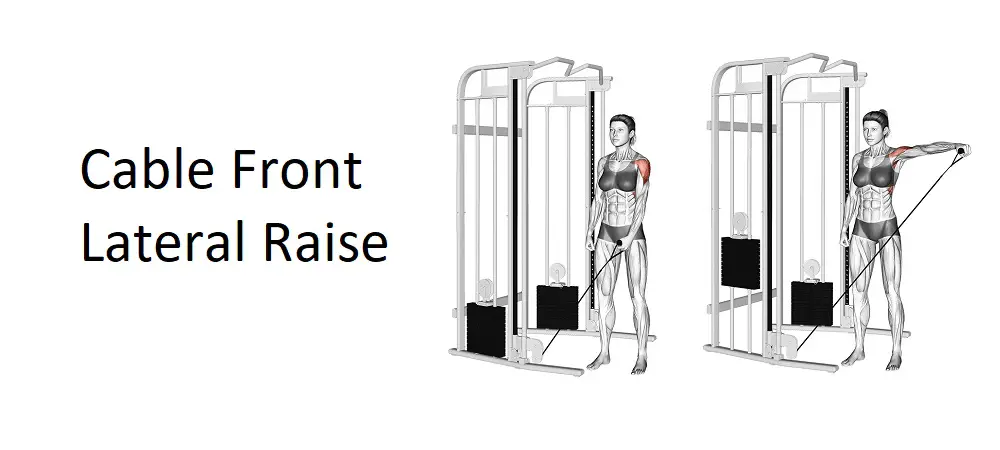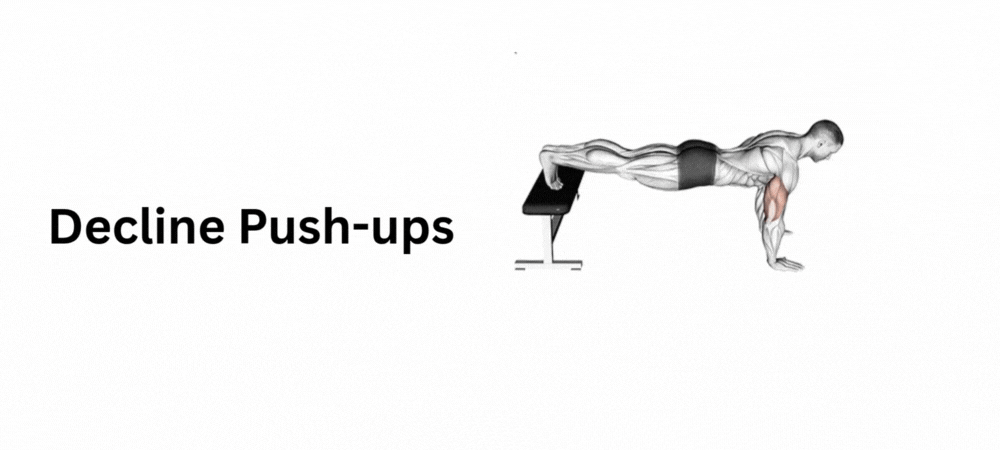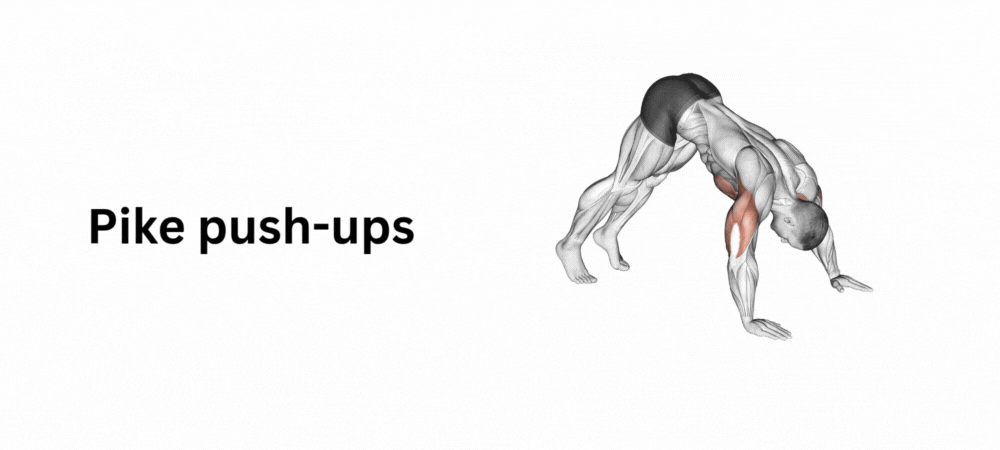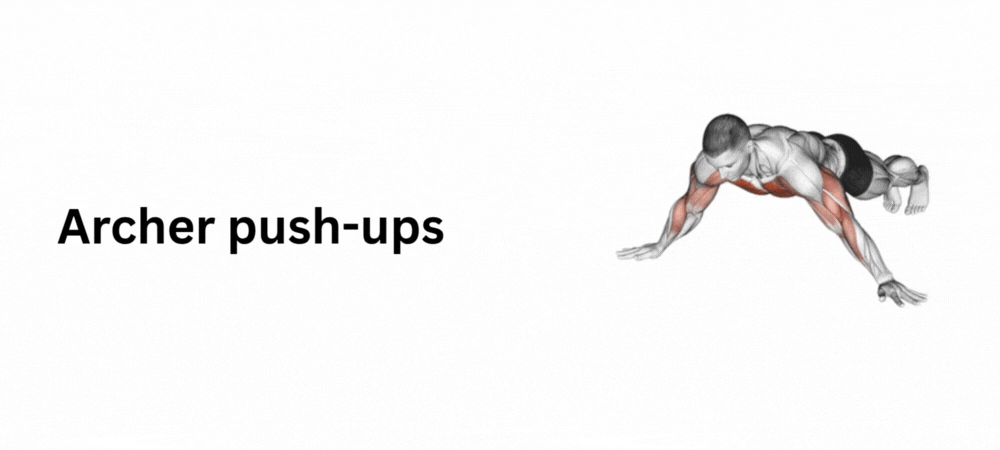Table of Contents
Introduction
The Cable Front Lateral Raise is an isolation exercise that emphasizes the anterior deltoids (front shoulder muscles). Unlike its free-weight counterpart, the cable variation offers constant tension throughout the movement, making it highly effective for building strength and definition. This exercise not only enhances the aesthetics of your shoulders but also contributes to better posture and functional strength for pushing movements.
A well-defined anterior deltoid improves the symmetry of your physique, particularly when paired with equally developed lateral and rear deltoids. As an integral part of any shoulder workout routine, the Cable Front Lateral Raise is suitable for lifters of all experience levels.
Instructions: How to Perform the Cable Front Lateral Raise
Proper Setup and Execution
Follow these detailed steps to perform the exercise correctly:
- Setup the Machine:
- Attach a single D-handle to the lowest pulley on the cable machine.
- Stand facing away from the machine if using one arm at a time. For a bilateral version, face the machine with two handles.
- Position Yourself:
- Stand with your feet shoulder-width apart to maintain balance.
- Keep your torso upright and your core engaged to avoid swinging.
- Grab the handle with one hand (or both if doing bilateral raises) and allow your arm to hang down in front of your thigh.
- Execute the Raise:
- Exhale as you lift the handle directly in front of you in a controlled motion until your arm is at shoulder height.
- Maintain a slight bend in your elbow throughout the movement.
- Ensure your palm faces downward (pronated grip) or slightly inward (neutral grip) to target the anterior deltoid optimally.
- Lower the Handle:
- Inhale as you slowly lower the handle back to the starting position, maintaining tension in your shoulder.
- Repeat:
- Perform 3–4 sets of 10–15 repetitions on each arm, adjusting the resistance as needed.
Common Mistakes and How to Avoid Them
- Using Momentum:
- Swinging your body to lift the weight shifts focus away from the deltoids and increases the risk of injury.
- Focus on slow, controlled movements to isolate the target muscle.
- Shrugging Shoulders:
- Shrugging engages the traps excessively, reducing tension on the anterior deltoid.
- Keep your shoulders relaxed and focus on lifting from the delts.
- Overextending the Range of Motion:
- Raising your arm too high can place unnecessary strain on your shoulder joint.
- Stop when your arm reaches shoulder height.
- Neglecting Core Engagement:
- A weak or disengaged core may lead to instability and improper form.
- Brace your core throughout the exercise to maintain balance and stability.
Benefits of the Cable Front Lateral Raise
This exercise offers a range of benefits for shoulder development and overall upper body performance:
1. Targeted Shoulder Development
- The primary focus on the anterior deltoid makes this exercise ideal for enhancing shoulder aesthetics and strength.
2. Constant Tension
- Unlike dumbbells, cables provide resistance throughout the entire range of motion, maximizing muscle activation.
3. Improved Stability and Posture
- Strengthening the front delts supports better posture and stability during pushing movements like bench presses and overhead presses.
4. Reduced Joint Strain
- The smooth motion of the cable machine minimizes the risk of injury compared to free weights.
5. Versatility
- You can adjust grip, range of motion, or angle of pull to target the deltoids in slightly different ways.
Muscles Worked
The Cable Front Lateral Raise targets the anterior deltoid as the primary muscle. However, it also engages several supporting and stabilizing muscles:
- Anterior Deltoid: The primary mover responsible for shoulder flexion.
- Lateral Deltoid: Assists in stabilization throughout the movement.
- Trapezius (Upper Fibers): Supports shoulder elevation.
- Serratus Anterior: Helps stabilize the shoulder blade during motion.
- Core Muscles: Engage to maintain proper posture and prevent swaying.
Variations
1. Cable Front Lateral Raise with Neutral Grip
- Holding the handle with a neutral grip (palm facing inward) shifts the emphasis slightly, offering variety in your shoulder training.
2. Bilateral Cable Front Lateral Raise
- Use both arms simultaneously to save time and promote balanced strength.
3. Cross-Body Cable Front Raise
- Position the cable handle across your body for a diagonal lift, providing a unique angle of resistance.
Video on How to Perform Cable Front Lateral Raise
To ensure proper form, watch a detailed instructional video on performing the Cable Front Lateral Raise effectively.
Other Names for Cable Front Lateral Raise
This exercise is also known as:
- Cable Front Raise
- Front Shoulder Cable Raise
- Cable Anterior Deltoid Raise
These alternative names emphasize its focus on the front deltoid muscles.
FAQs
1. Is the Cable Front Lateral Raise suitable for beginners?
Yes, it’s beginner-friendly when performed with light resistance to focus on form and control.
2. How is this different from the dumbbell front raise?
The cable version provides constant tension, while the dumbbell version relies on gravity, resulting in variable resistance.
3. Can I do this exercise with both arms simultaneously?
Yes, bilateral raises are effective and save time. However, single-arm raises may help focus on form and correct imbalances.
4. How much weight should I use?
Start with a manageable weight that allows you to complete 10–15 reps with proper form. Gradually increase resistance as you build strength.
5. How often should I include this exercise in my routine?
Incorporate it 1–2 times per week as part of your shoulder or upper body workout.
Conclusion
The Cable Front Lateral Raise is a powerful isolation exercise for developing the anterior deltoids. Its constant tension, joint-friendly motion, and adaptability make it an excellent choice for anyone looking to improve shoulder aesthetics, strength, and stability.
When performed correctly, this exercise not only enhances the appearance of your shoulders but also contributes to better posture and performance in other pushing movements. Pair it with lateral and rear delt exercises for a well-rounded shoulder routine.








